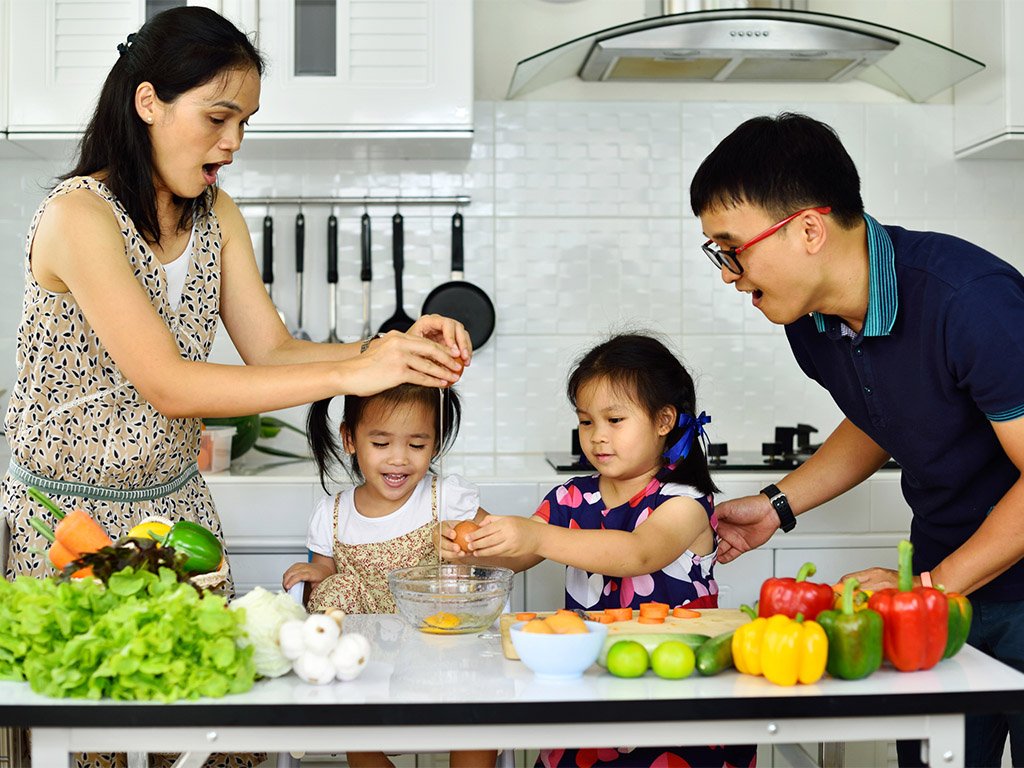5 ways to prevent childhood obesity and still embrace Hawaiʻi’s food-centric culture.
By: Kehau Golis, Photo Credit: GETTY IMAGES
From plate lunches to malasadas, food is an important part of Hawai‘i’s culture. Potlucks often feature dishes from every corner of the world, while aunties, uncles and tūtūs are always happy to send us home with leftovers.
Hawai‘i’s high cost of living also impacts the way we shop and consume food. As a result, sometimes we end up buying the “best deal” even if it’s not the healthiest option.
ʻOno foods—combined with our culture of consumption and other socioeconomic factors—sometimes cause us to stop and ask ourselves, “Is my keiki building positive attitudes toward nutrition?”
A number of factors contribute to weight gain in children and adults, including lack of exercise, genetics, certain kinds of medicines or underlying health issues.
September is National Childhood Obesity Awareness Month, highlighting an issue that is important to Hawaiʻi’s keiki.
One of the main causes of obesity is the overconsumption of calories and foods with high sugar and fat content. While it’s okay to indulge in the occasional SPAM musubi or shave ice, it is important to teach our keiki that food is for nutrition and is the key to growing up healthy and strong. Even the pickiest of eaters can transform into healthy eaters by developing the right habits at an early age.
Here are five ideas on how to instill healthy eating habits in your keiki:
- Make mealtimes enjoyable. Offer one family meal instead of making keiki a separate “kid-friendly” meal. Put away phones, turn off the TV and use this time to talk story and bond with family. This will help your child associate mealtime with family time.
- Involve children in the food preparation process. Children as young as 2 years old can help wash vegetables, while older children can mix or even chop ingredients. Cooking together or starting a garden can show children the effort that goes into creating a meal, which may get them excited about trying the fruits (and vegetables) of their labor.
- Introduce new foods at the beginning of a meal. When your kids are hungry, they may take risks and try new foods. Show that you are willing to try new foods and offer them some, as well. Be persistent and don’t give up.
- Model appropriate food behavior. Keiki mimic their parents’ food habits, so it’s important to set good examples at mealtime. Talk about when you feel full and the healthy meals that you enjoy.
- Disguise healthy foods. Smoothies and soups are easy ways to make sure your kids are getting enough fruits and vegetables.
When it comes to avoiding childhood obesity, diet is only one part of the equation. Regular exercise will help your keiki maintain healthy weights. If you pick a physical activity that every member of your family enjoys, exercise won’t seem like a chore.
Setting aside time to explore the outdoors, go on walks or even dance in the living room can be beneficial for your ʻohana. If you’re concerned about your children’s weight, your family physician can help recommend solutions.
Kehau Golis is the assistant director for the Early Head Start and Head Start Program at Parents And Children Together, a Hawaiʻi nonprofit providing early childhood education and social services to nurture relationships that matter most for local children and families. For more information, visit ParentsAndChildrenTogether.org.
Parents And Children Together is partnering with HONOLULU Family in a series of articles on creating safe and promising futures for Hawaii’s children and families.


